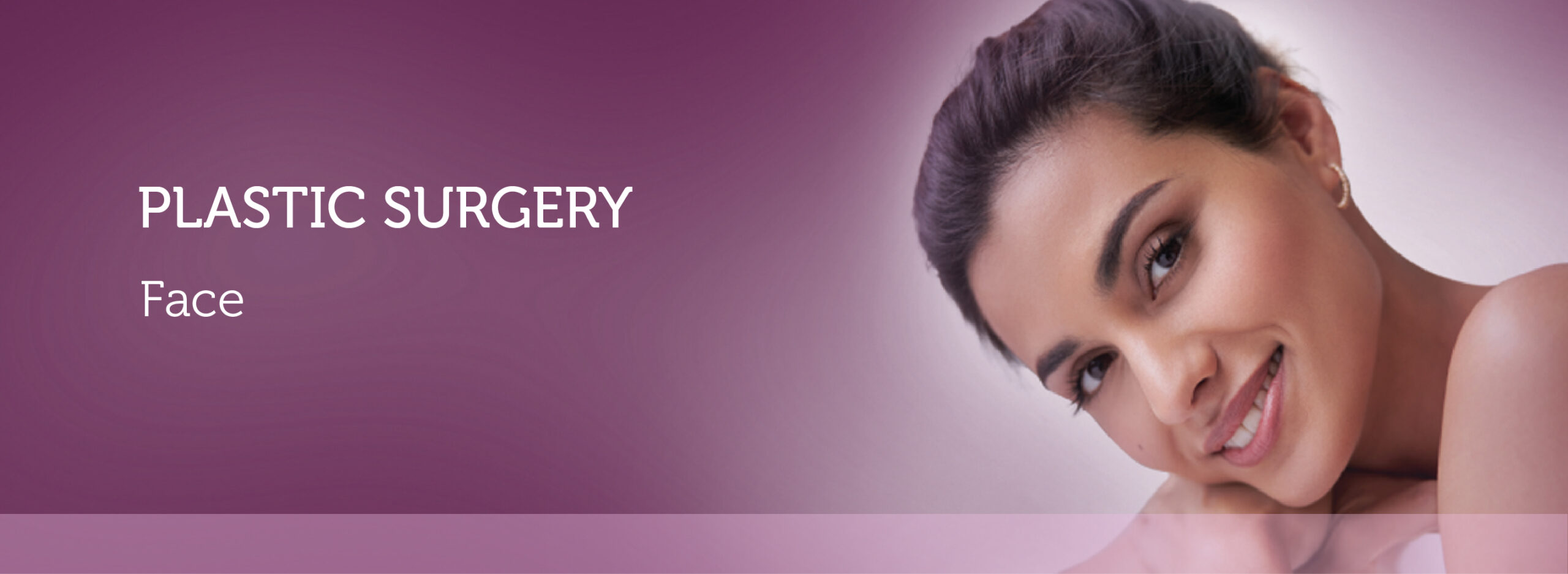
Plastic Surgery - Face
Facial plastic surgery focuses on enhancing and rejuvenating the appearance of the face through various cosmetic surgery procedures. With advancements in techniques and technology, individuals can achieve natural-looking results that boost confidence and improve self-esteem. Whether you’re considering a facelift in Dubai, buccal fat removal, or rhinoplasty surgery, these procedures help refine facial features while maintaining harmony and balance.
How Does Facial Plastic Surgery Work?
Facial plastic surgery involves a range of surgical techniques designed to alter or improve facial features. Plastic surgeons in Dubai assess individual needs and create personalized treatment plans to ensure optimal outcomes. Procedures such as face fillers in Dubai, thread lift Dubai, and double chin removal Dubai utilize advanced techniques to enhance facial symmetry and restore a youthful appearance. Depending on the procedure, anesthesia may be used to ensure comfort and precision.
Who Can Benefit from Facial Plastic Surgery?
Individuals looking to address aging signs, facial asymmetry, or aesthetic dissatisfaction can benefit from facial plastic surgery in Dubai. Whether it’s facelift surgery, eyelid surgery in Dubai, or neck lift Dubai, these procedures help both men and women achieve a refreshed and youthful appearance. Those considering rhinoplasty Dubai may also seek improvements in nasal function or facial balance.
What Are the Benefits of Facial Plastic Surgery?
Facial plastic surgery can provide numerous benefits, including:
- Improved facial symmetry and contour
- Enhanced facial features through procedures like jawline fillers in Dubai and lip fillers Dubai
- A more youthful appearance with skin tightening in Dubai
- Boosted self-confidence with subtle yet effective enhancements
- Correction of facial concerns, such as buccal fat removal Dubai for a more sculpted look
Types of Facial Surgery Procedures
Facelift – Full
A full facelift in Dubai addresses sagging skin, deep wrinkles, and loss of volume by tightening facial muscles and redistributing fat for a more youthful look.
Facelift – Mini/Midface
A mini facelift or midface lift is a less invasive facelift option targeting specific areas like the cheeks and jawline, providing a refreshed, lifted look with minimal downtime.
Neck Lift
A neck lift in Dubai removes excess skin and fat from the neck, enhancing the jawline and creating a firmer, youthful contour.
Buccal Fat Removal
This procedure reduces buccal fat pads, giving the face a more sculpted and chiseled appearance.
Lip Lift
A lip lift in Dubai shortens the distance between the upper lip and nose, creating fuller lips and a pronounced Cupid’s bow.
Rhinoplasty
Rhinoplasty in Dubai reshapes the nose to improve its size, shape, and function, ensuring facial balance. Rhinoplasty cost in UAE varies based on complexity and customization.
Blepharoplasty (Eyelid Surgery)
Eyelid surgery in Dubai removes excess skin and fat from the eyelids, reducing puffiness and signs of aging.
Facial Implants
Chin implants in Dubai and cheek implants enhance facial volume, providing better definition and harmony.
Double Chin Liposuction
Double chin removal in Dubai eliminates excess fat under the chin, refining the jawline contour.
Fat Transfer to Face
A fat transfer in Dubai involves harvesting fat from another body area and injecting it into the face to restore volume and smooth wrinkles.
Forehead Lift
A forehead lift in Dubai reduces forehead wrinkles and lifts drooping brows for a more alert and youthful appearance.
Otoplasty (Ear Surgery)
Otoplasty in Dubai reshapes prominent or misshapen ears, improving facial symmetry.
Pre- and Post-Care for Facial Plastic Surgery
Before Surgery: Essential Preparations
- Consultation: Meet with a plastic surgeon in Dubai to discuss goals and expectations.
- Medical Evaluation: Undergo tests to ensure suitability for procedures like facelift surgery, rhinoplasty, or buccal fat removal.
- Medication Review: Inform your surgeon about medications and avoid blood thinners if advised.
- Smoking Cessation: Stop smoking at least 2-4 weeks before surgery to promote faster healing.
- Diet & Hydration: Maintain a healthy diet and stay hydrated before surgery.
- Arrange Transportation: Plan for someone to drive you home post-surgery, especially after procedures like lip lift or facelift Dubai.
Post-Surgery Care: Ensuring a Smooth Recovery
- Follow-Up Appointments: Attend all visits to track healing progress.
- Medication Adherence: Take pain medications and antibiotics as prescribed.
- Swelling & Bruising Management: Use ice packs and elevate your head to minimize swelling.
- Avoid Strenuous Activities: Refrain from heavy lifting or intense exercise post-procedure.
- Sun Protection: Wear sunscreen to protect healing skin, especially after rhinoplasty Dubai or facial fillers Dubai.
- Gentle Skincare: Follow your surgeon’s guidance for cleansing the face without harsh products.
- Hydration & Nutrition: Stay hydrated and eat nutrient-rich foods to support recovery.
- Monitor Healing: Look for signs of infection or excessive swelling and contact your plastic surgeon in Dubai if needed.
Book your appointment today:
Achieve your aesthetic goals with Tajmeel Clinic
Our Experts

